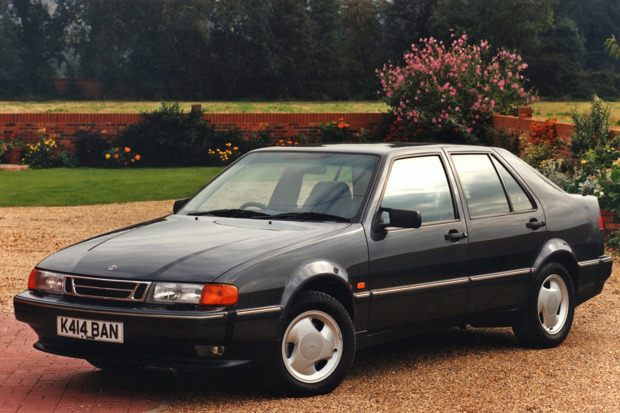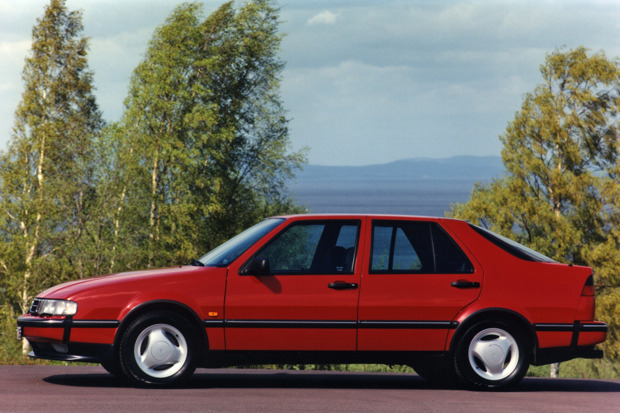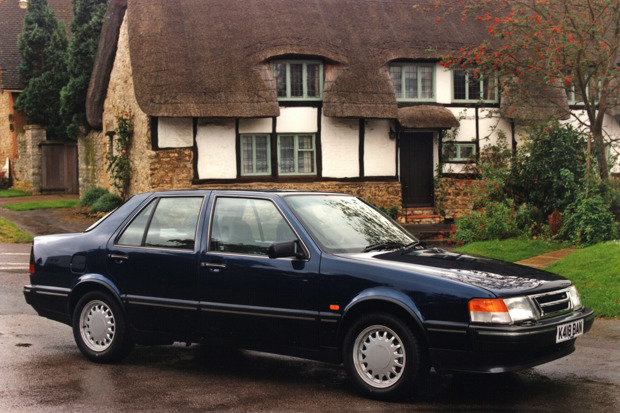Future Classic Friday: Saab 9000

By the mid-1980s, Saab had become a victim of its own success. Having survived for years with a model range spun off from a single vehicle architecture, the success of the Saab 99 and 900 Turbo models lifted the brand from being a quirky left-field choice to being considered as an alternative to the likes of BMW and Mercedes-Benz in the yuppie-filled car parks of corporate Europe.
The popularity of the Saab 900, in particular, led to calls for Saab to launch a bigger car, aimed at the executive market, but the Swedish firm didn’t have enough in the coffers to enable this to happen.
Meanwhile, at the opposite end of Europe, Fiat was also looking at developing a large car platform to help expand the Alfa Romeo and Lancia brands, as well as offer a larger Fiat that would give it more opportunities in the fleet market.
The two companies entered into an agreement to co-develop a new large car architecture, the floorpan and wheelbase of which would be the same, but with space to engineer in brand-specific suspension and engineering elements.
The result was the Type-4 platform, which made its debut in 1984 under the Lancia Thema, and shortly after in the Saab 9000.
The Saab 9000 differed from the three other cars in the quartet (the others being the 1985 Fiat Croma and 1987 Alfa Romeo 164) by having a beam axle for its rear suspension, rather than the independent MacPherson strut set-up on the Italian variants.

While this may appear to have been a retrograde step, it wasn’t. The Saab set-up was designed to minimise understeer and give the characteristics of a rear-wheel-drive car on loose surfaces such as Sweden’s gravelled forest lanes, which make up almost half of the nation’s road network.
The Saab 9000 was introduced in the UK in 1985, initially as a five-door hatchback to buck the trend in the executive car market – something that Saab insisted on as part of its brand DNA. It was powered by Saab’s 2.0-litre turbo engine, carried over from the Saab 900.
It was well-received, albeit never more than a ‘steady’ seller. One of its more distinctive features were the seats, with their ‘Cumberland Sausage’ style head restraints – something that designer Bjorn Envall later conceded were influenced by Jim Henson’s Muppets movie Pigs in Space. Watch the film and the similarity is immediately obvious…
In 1989, the range was extended to include a saloon version – the Saab 9000 CD – as a more direct competitor to Saab’s German rivals of the time, although it looked slightly incongruous compared to the hatch. At the same time, the larger 2.3-litre B234 engine joined the range to give it broader appeal.
Criticisms of the looks were addressed in late 1991 with a thorough facelift across the range, which saw the Saab 9000 get a lower, much narrow front end and very different rear lamp treatment.
Together they made the car look much more modern and certainly gave the saloon variants more harmonious lines, though many critics prefer the hatchback variant with the purer pre-facelift styling.
The interior was reworked, too, with a wider, less fussy dash and more conventional seats, which moved the Saab 9000 away from being overtly quirky into something that could compete more directly with executive rivals.

To confuse matters even further, the Saab 9000 hatchback was scaled back to be replaced by the liftback Saab 9000 CS (the original model being renamed 9000 CC to distinguish between the two).
The CS looked similar to the CD saloon, but retained a five-door hatchback layout, with a much larger boot, and became the best-selling Saab 9000 variant in the UK.
In 1993, the hot Aero model arrived, with a 225bhp version of the B234 engine using a Mitsubishi turbocharger, while a special edition hot Saab 9000 came the following year in the form of the Carlsson, named after Saab’s former works rally driver Eric Carlsson. It featured a colour-coded body kit and 220bhp.
The Saab 9000 was replaced by the visually similar (but quite significantly different) Saan 9-5 in 1998 and for years existed as a largely undesirable banger, from a defunct brand and with high running costs, leading to many Saab 9000s disappearing over relatively straightforward faults that were deemed uneconomical to fix.
Unlike the Saab 900, the 9000 was considered too conventional to be a ‘true Saab’ by many, not least because it was the first model to do away with the brand’s traditional ignition key location by the gear lever.
In retrospect, though, the Saab 9000 was a fine machine. Brilliantly engineered, well-made and rewarding to drive, it answered a need for Saab to increase its market presence and has aged exceptionally well, especially in post-facelift guise.
Today, they’re starting to catch on. Whereas a few years ago, £500 would bag you a tidy bargain barge, you’ll need to double that for anything worth saving today, while performance models such as the Aero and Carlsson are already fetching proper money – up to £5k for a good one. As a future classic, the Saab 9000 seems like a sensible place to invest right now. Find a classic Saab for sale.
What do you think will be a classic in the near future?


